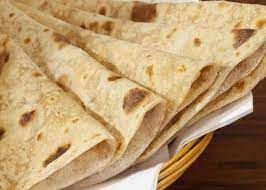Can Eating Stale Bread Help You Lose Weight?
The argument about eating stale roti for breakfast has long been a source of controversy in homes across many countries. While some people prefer to throw away leftover rotis out of fear that they may spoil, others adopt the practice because they think it may be healthy, especially in terms of managing diabetes and losing weight. In order to investigate the allegations surrounding the ingestion of stale roti, this article will look at the supporting scientific data.
The Custom of Consuming Stale Roti:
Indian flatbread, or leftover roti, is often eaten for breakfast in many homes. These stale rotis, which are often served with milk, are said to have special medicinal qualities that may help with a number of health issues, most notably diabetes and weight reduction. Many people have been adhering to this routine for decades. This custom is deeply rooted in cultural and family norms.
Stale Roti’s Health Benefits: True or False?
Claim 1: Control of Diabetes
Eating stale roti may help manage diabetes, according to one of the most common claims about how to control diabetes. It has been proposed that the roti’s nutritional profile, notably its fiber content, may be improved by the fermentation process that takes place when the roti becomes stale. Fiber is believed to reduce the rate at which sugar is absorbed, improving blood sugar regulation. Although this assertion has some validity, it’s vital to remember that the size of the advantages could be exaggerated. Roti does really have more fiber after fermentation, which may help with glucose management. But depending just on stale roti to control diabetes is insufficient in place of a healthy diet, consistent exercise, and the right medical attention. Before changing one’s diet, it is very important to speak with a healthcare provider, particularly if one has diabetes.
Claim 2: Loss of weight
Another common belief is that eating stale roti can help with weight reduction. This assertion is supported by the theory that a higher fiber content brought on by fermentation might induce satiety and result in lower calorie consumption throughout the day. Even though fiber is linked to greater sensations of fullness, focusing simply on stale roti to lose weight is oversimplified. A number of variables, such as total calorie intake, macronutrient balance, physical activity, and individual metabolic rates, must be considered in order to successfully control weight. When combined with a balanced diet and a healthy lifestyle, stale roti may help with weight reduction attempts, but it should not be seen as a miracle cure.
Scientific Knowledge:
The claims about the health advantages of stale roti are fascinating, but there is little scientific proof to back them up. There aren’t many studies that particularly look at the impacts of eating stale roti; the ones that do tend to focus on how fermentation affects the nutritional profile of grains in general. Grain nutritional profiles do vary as a result of fermentation, including an increase in several vitamins and minerals. Additionally, the food’s fiber content may actually rise due to the fermentation process’ breakdown of complex carbohydrates. As previously indicated, these modifications may benefit satiety and blood sugar regulation. More focused study is necessary before applying these results to the intake of stale roti.
Health and Nutrition in Balance:
The intake of stale roti should be considered in the context of a balanced diet. While the fermentation process may have certain nutritional advantages, it’s important to remember that a balanced diet must also include other key elements. To maintain overall health and wellbeing, a diet full of whole grains, lean proteins, fruits, vegetables, and healthy fats is essential.
Obtaining Expertise:
Before making large dietary changes, anyone with particular health issues, such as diabetes, should always speak with a healthcare expert. Based on a person’s medical background, present health condition, and dietary preferences, registered dietitians, endocrinologists, and other medical professionals may provide individualized advice.
Cultural Relevance:
For many individuals, the custom of eating stale roti has cultural and family significance. In addition to assessing its health claims, it’s critical to understand and respect cultural norms. If eating stale roti is a valued habit, people may want to think about include it in their diet in a healthy, thoughtful way.
Consuming stale roti, often with milk, is a cultural habit that has its roots in (how to treat diabetes). Although there is some scientific backing for claims that it may help control diabetes and help people lose weight, there isn’t much data to back these claims up. The nutritional profile of grains is altered by fermentation, which also increases fiber content and may help with satiety and blood sugar regulation. However, depending exclusively on stale roti to achieve these health advantages ignores the difficulty of managing diabetes and losing weight. The cornerstone of optimal health continues to be a balanced diet that includes a range of nutrient-rich foods and frequent exercise. While some people’s diets may include stale roti, this should only be seen as one element of a more comprehensive strategy for overall health. As with any dietary adjustment, consulting a healthcare expert is advised to make sure that personal health objectives are achieved in a secure and efficient way.







